We thought it would be hard to top going to the Sapporo Snow Festival yesterday, but Janelle and I had one more day in Sapporo before heading out to ski at Niseko Village. We decided to go to the Historical Village of Hokkaido, since it looked like an interesting way to learn more about life in Japan. We put new kairo into our pockets to keep our hands warm and took the Tozai subway to Shin Sapporo Station. We were nervous about catching a bus, but it was fairly well marked, and at the end of the line the driver indicated that this was our stop, which was quite obvious but kind of him.
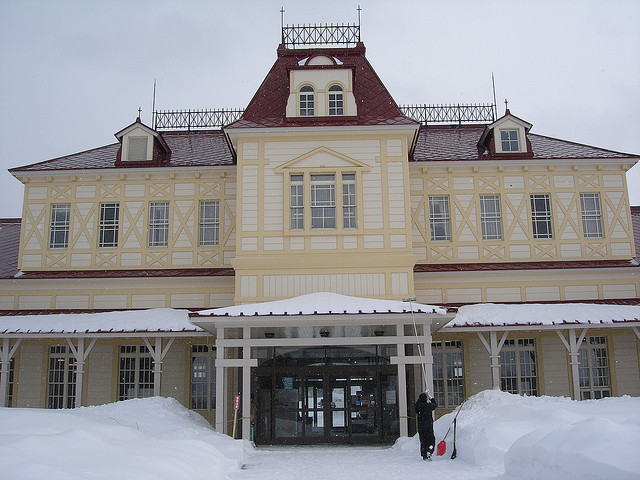
Original Sapporo station (photo: selena lynn/flickr)
The entrance to the village was a wonderful old train station, which turned out to be the original Sapporo Station building, moved there when the modern, huge new structure took its place downtown. From there, it felt like we were stepping back in time. In some ways, the village had the feel of the American “Wild West.” It was a frontier town which needed all products shipped from afar, or produced locally. The snow sure made us wonder what the first settlers there must have felt like, cold and isolated on this northern island.
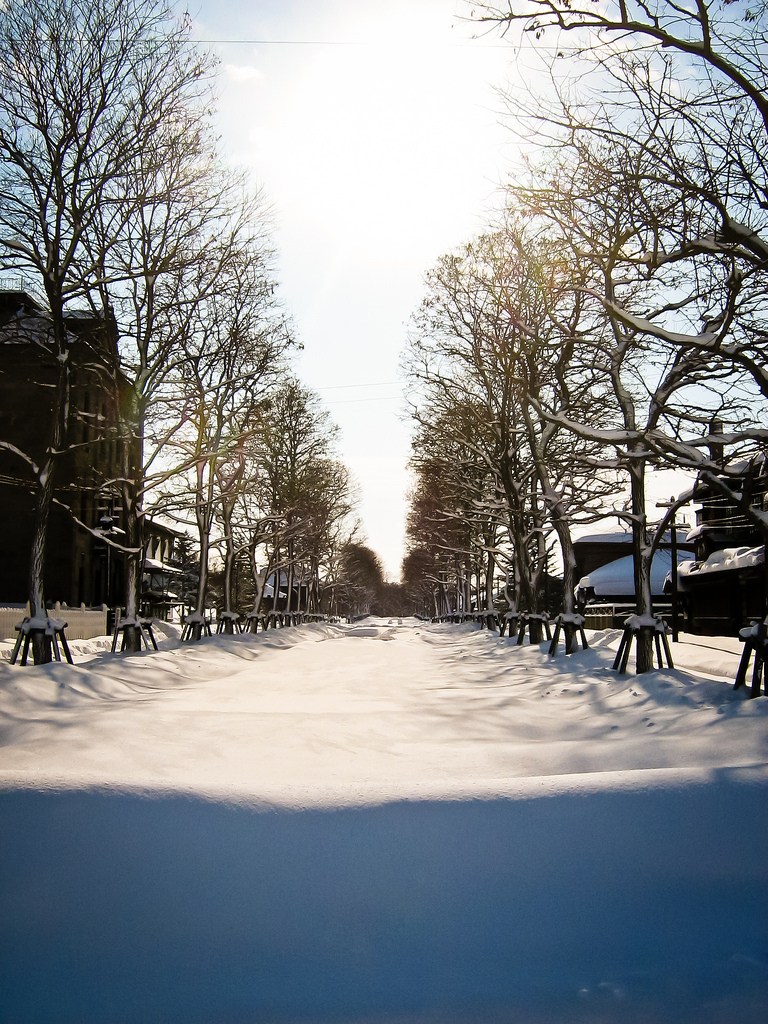
Historical Village of Hokkaido
It was fascinating to explore all the buildings from a police station to newspaper office and see the things the people used in everyday life. The Historical Village of Hokkaido staff members were friendly and explained and showed things well, many even spoke English, bringing life from the past more into perspective.
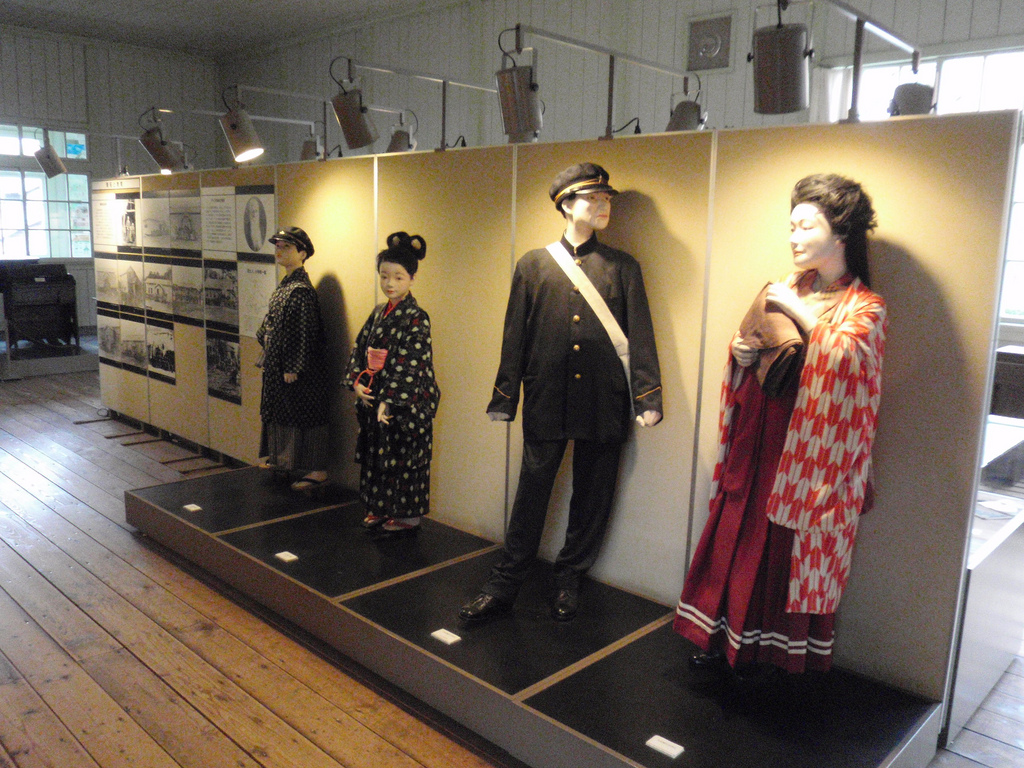
Historical Village of Hokkaido, Sapporo
I could tell that Janelle and I were drawn to the items that we knew best; she is a teacher, so spent a long time in the school, enjoying the recordings of songs sung by students. I ended up dawdling in the fishing village, where my summertime hobby was a matter of making a living to the residents here. The woodcutter’s house in the mountain village seemed so lost in the white wilderness, I could not imagine an entire winter living in that little hut.
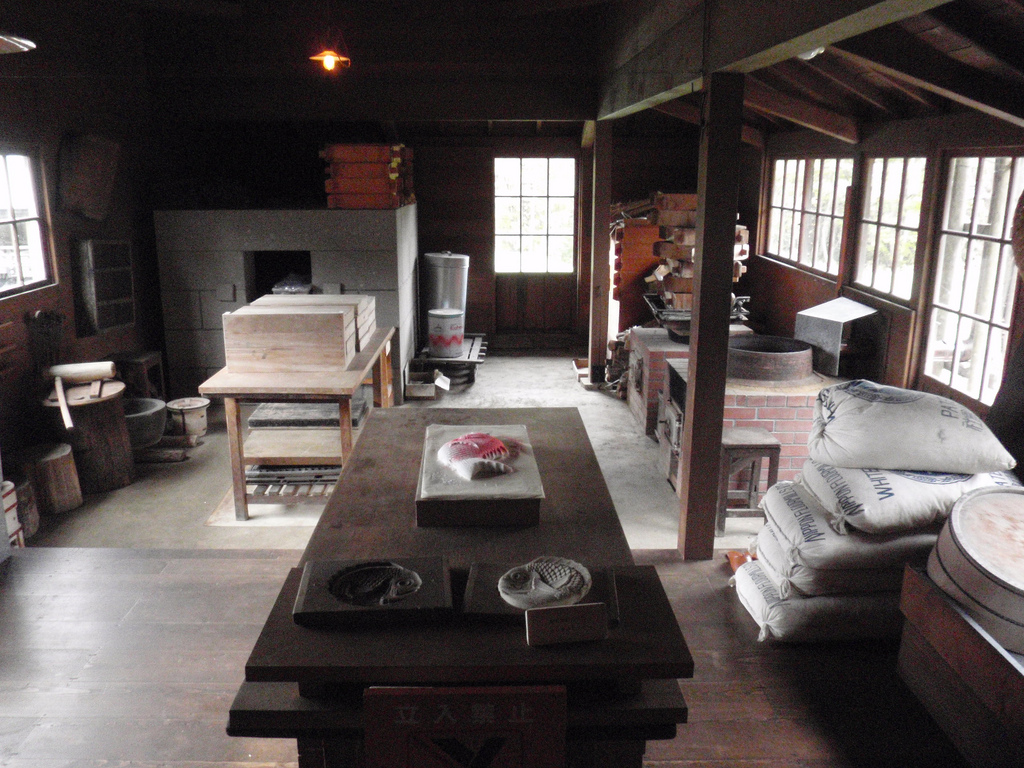
Building interior at Historical Village of Hokkaido, Sapporo
We took our time and checked out each of the sections of the Historical Village of Hokkaido at leisure. It would be interesting to see in the summer when the blanket of snow is gone and the farmer’s fields are growing crops. I can imagine it is more hopeful and full of life then. It was also fun for us to see the shrine, and we realized that our vision of Japan was full of these red gates and traditional roofs, but Sapporo was a modern city where these things did not seem to be present. It made us look forward to going south to see Kyoto later in the week.
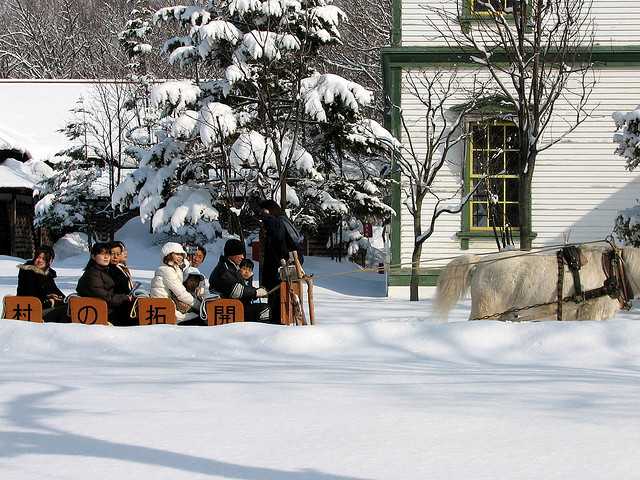
Historical Village of Hokkaido winter sleigh ride
Thankfully the woman at our hotel had warned us that there was no restaurant, so we had come prepared with snacks and a few cans of coffee. I think our favorite part was taking a horse-drawn sleigh ride through the town. It seemed just like a scene from a movie, and later we found out that many historical dramas are filmed there.
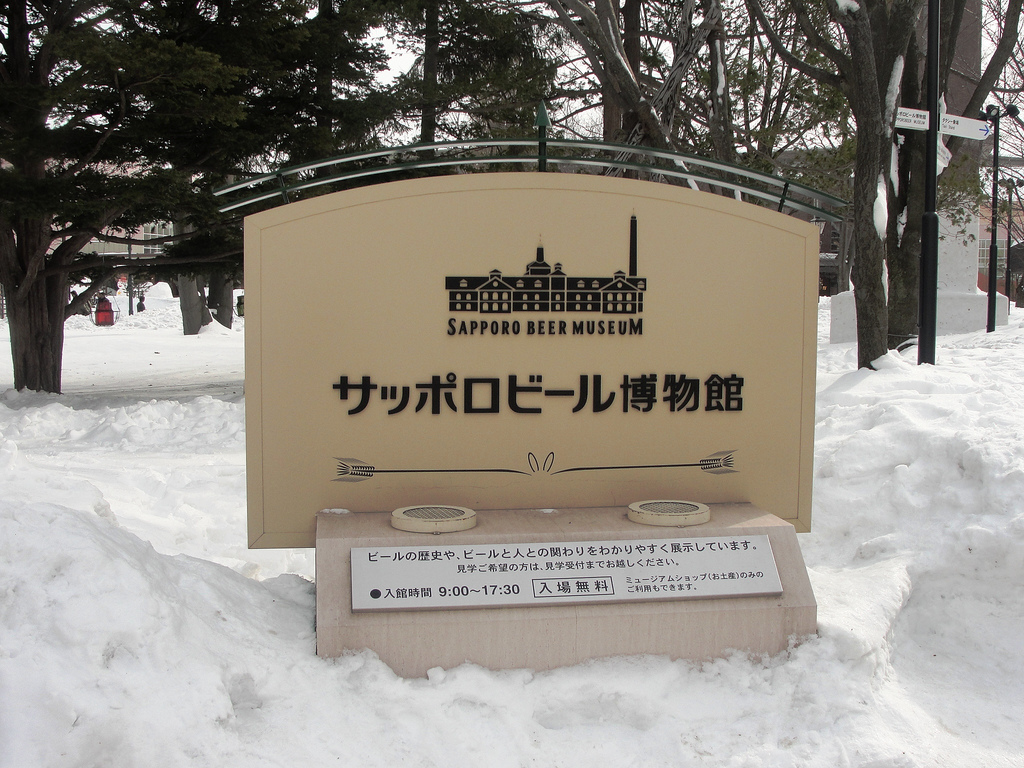
Sapporo Beer Museum and Biergarten
By the time we returned to the Sapporo city center, we were rather hungry and wanted to have a full meal. Thankfully our itinerary then took us to the Sapporo Beer Museum and Biergarten. First we stopped at the museum and browsed around the displays showing the history of beer brewing in Japan.
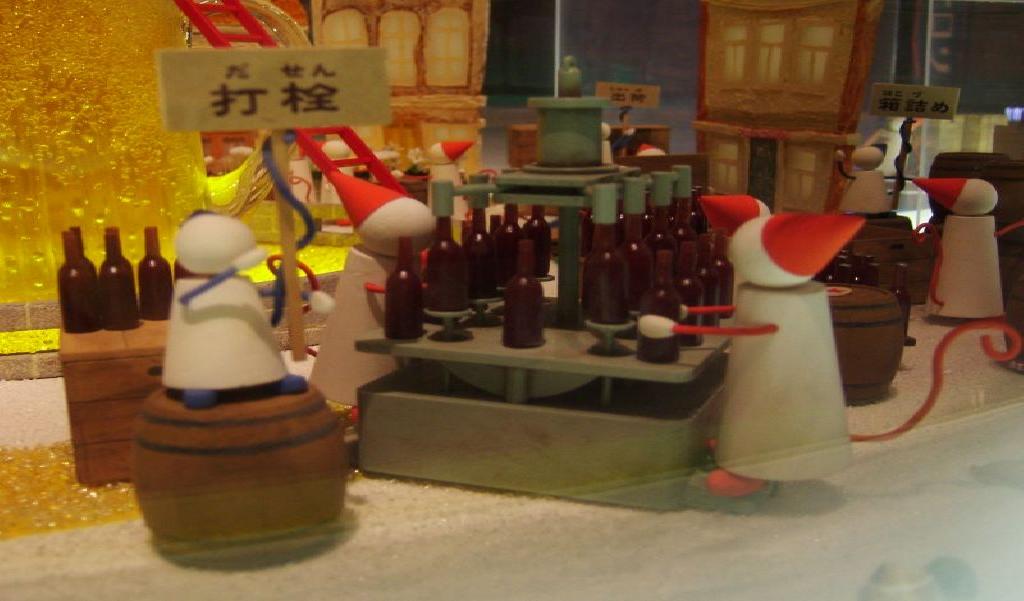
Sapporo Beer Museum and Biergarten Umpa-lumpa
Our main interest was the tasting room, where we enjoyed samples of several beers that we had never had before. From there, we headed to the restaurant.
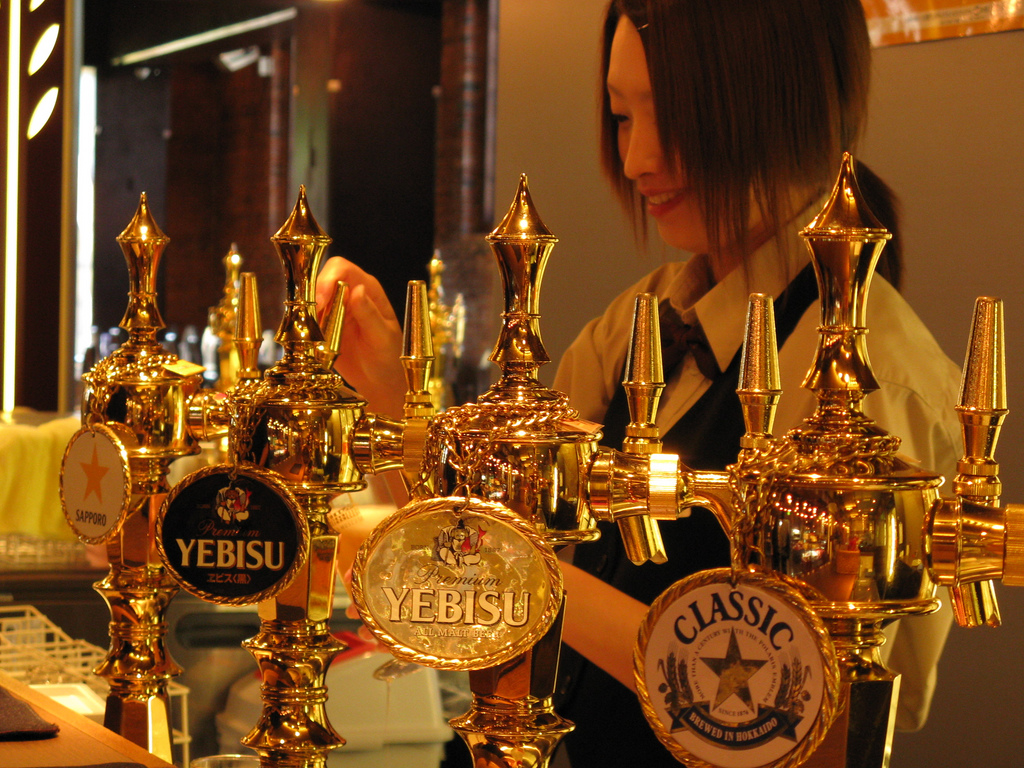
Sapporo beer museum tasting room tap
It felt good to sit down and relax, but the experience was quite surreal. It seemed just like we had been transported to a beer hall in Germany, except that everyone around us was Japanese. There was a high ceiling soaring over the giant cauldron for brewing beer.
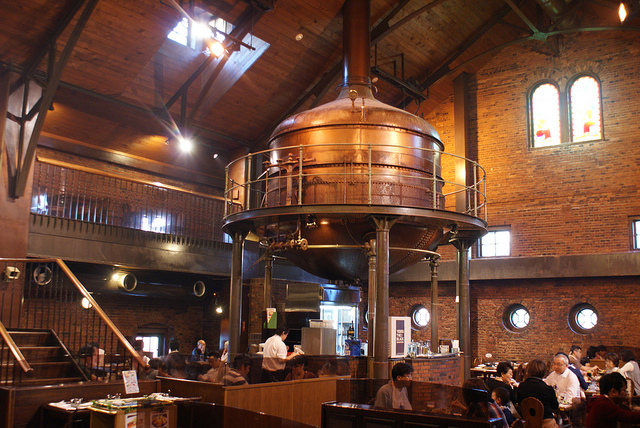
Sapporo Biergarten
Lots of brick and dark wood beams, and several of the groups seemed like they were well into their cups. The place was called the Ghengis Khan, and the main offering was mutton, so the odor was cooking meat blending with beer and smoke.
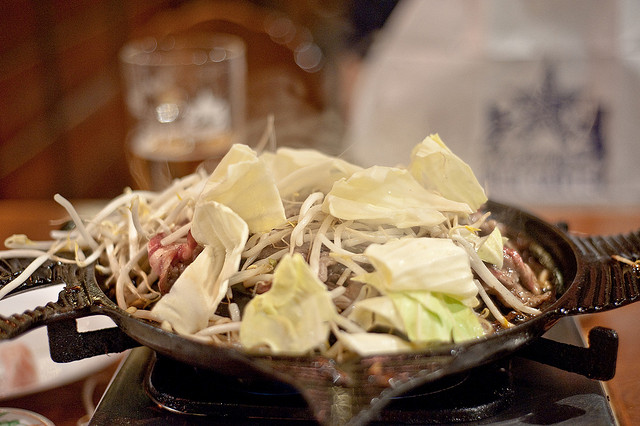
Ghengis Khan BBQ at Sapporo Beer Garden
Actually, the food was great, not just the mutton but also Hokkaido crab. We ate our fill and drank probably more than we should before heading back to the Hotel Nikko Sapporo. It was a great way to end our visit to Sapporo. Someday we would like to return and see what it is like in the summer.